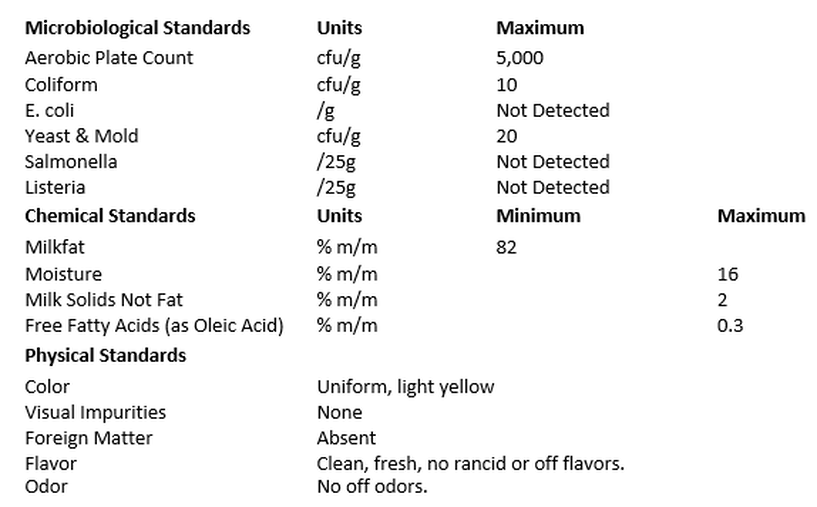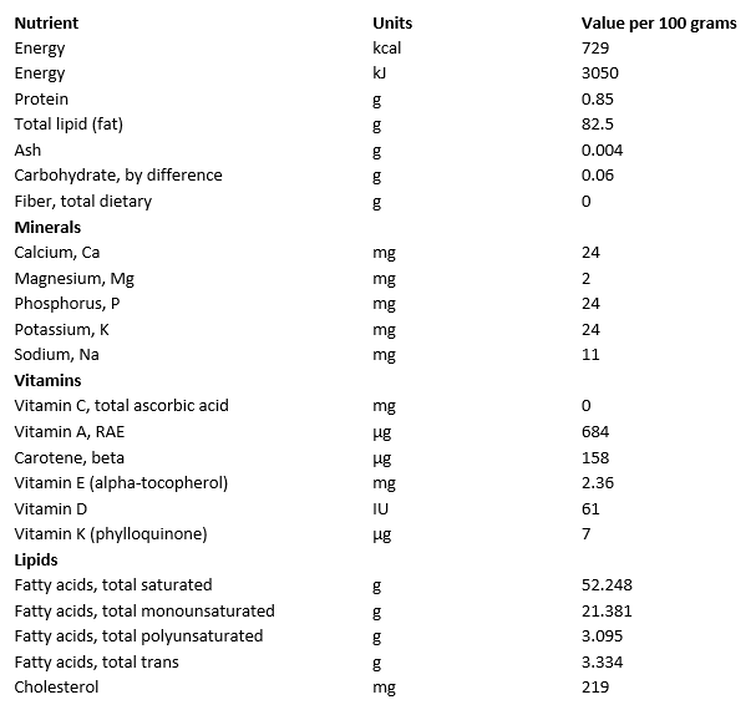UNSALTED BUTTER
Sweet Cream Unsalted Butter is considered a more versatile type of butter than salted butter. Chefs, bakers and sweets producers prefer the neutral and delicate flavor of sweet cream unsalted butter. It is ideal for cooking and baking applications as it allows for more control over salt levels in a recipe. The only difference with salted butter is that salt is not added to the product. And of course the salt works as a preservative, so the salted butter has a longer shelf life.
Product Description
Sweet cream is pasteurized at approximately 85°C (185°F) for not less than 15 seconds or for a time and temperature giving equivalent results such that the cream meets requirement for pasteurization.
Unsalted butter is obtained by removing water and solids non-fat by churning pasteurized sweet cream. Unsalted butter is light yellow in color and possesses a sweet, pleasing flavor which is free from rancid, oxidized or other objectionable flavors.
Ingredient and Allergen Statement
Pasteurized Cream Contains Milk
Consult local and country of destination labeling requirements for correct labeling of this ingredient.
Regulatory & Compliance
Product meets CODEX Standard 279-1971 Meets Kosher Requirements
Meets Halal requirements

Quality Assurance
Products are manufactured under strict quality assurance procedures which are enforced at all times. Manufacturing plants are subject to rules and regulations of the United States Food and Drug Administration (FDA), the United States Department of Agriculture (USDA) and the European Food Safety Authority. Precautions are taken at all steps during manufacture, storage, and distribution to ensure product quality and food safety.
Packaging
No staples, nails, wire ties or similar devices may be used to close packages.
Bulk butter is packed in 25kg corrugated fiberboard boxes lined with a poly liner.
Shelf Life
18 months at -18°C to -24°C frozen (-0°F to -10°F) + 120 days refrigerated ≤7°C (45°F) after thawing. Store away from highly aromatic food products under controlled humidity (80-85%) conditions.
Labeling and TraceabilityAll labels contain sufficient detail to provide full product traceability which includes: product name, manufacturing plant number, lot number, sublot number, box number, date of packaging, and packaging line information.
Typical Nutritional Analysis





